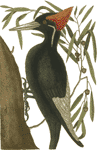Natural Resources, School of

School of Natural Resources: Faculty Publications
Document Type
Article
Date of this Version
2009
Citation
Published in AMBIO: A Journal of the Human Environment, 38(1) 2009.
Abstract
Introduced reindeer, Rangifer tarandus, over exploited lichen-rich plant communities on St. Matthew Island in the Bering Sea. A die-off of the reindeer followed, exacerbated by extreme weather in 1964, resulting in extirpation of the reindeer. A similar pattern of removal of lichens as major components of plant communities has occurred following introductions of reindeer to other islands at high latitudes. By 1985, two decades following die-off of the reindeer, total lichen biomass was only 6% of that in similar plant communities on adjacent Hall Island, not reached by the reindeer. By 2005, 41 y after the reindeer die-off, lichen regrowth on St. Matthew was only 12% of lichen biomass in the Hall Island communities. A warmer, drier climate and decreased fog in recent decades contributed to deterioration of conditions favoring lichen growth on St. Matthew Island.
Included in
Natural Resources and Conservation Commons, Natural Resources Management and Policy Commons, Other Environmental Sciences Commons


Comments
© Royal Swedish Academy of Sciences 2009